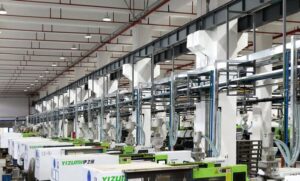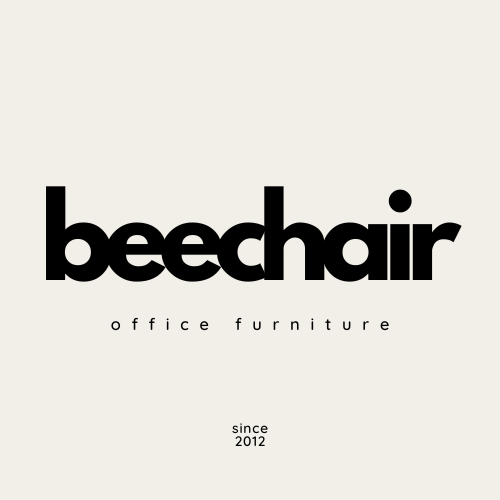The Ultimate Guide to Private Label Office Chairs: From OEM/ODM Selection to Amazon Bestseller

In the booming e-commerce landscape, the office chair market, particularly ergonomic models, presents a golden opportunity for online resellers. The global shift to hybrid work and a heightened awareness of personal health have fueled unprecedented demand for comfortable, supportive, and durable seating. For ambitious online sellers, this isn’t just a trend; it’s a multi-billion-dollar market ripe for the taking. However, navigating the complexities of manufacturing, quality control, and branding can be a daunting maze.
This comprehensive guide is your roadmap. We will walk you through every critical step, from understanding the manufacturing landscape to launching a product that not only sells but becomes a bestseller on platforms like Amazon.
1. The Billion-Dollar Opportunity in Private Label Furniture
The global office furniture market is a colossal industry, projected to reach $96.6 billion by 2028, growing at a steady compound annual growth rate (CAGR) [1]. A significant and ever-increasing portion of this growth is being captured by online channels, where consumers seek convenience, variety, and value. Within this vast market, ergonomic chairs stand out as a premier high-growth segment.
For online entrepreneurs, private labeling is the most powerful strategy to enter this market. It’s the difference between being a simple reseller and being a brand owner. It allows you to build a defensible business, cultivate customer loyalty, and, most importantly, escape the relentless price wars that plague generic product categories.
Why Private Label Ergonomic Chairs?
2. Decoding the Acronyms: OEM vs. ODM vs. Private Label
Understanding the language of manufacturing is the first step. While often used interchangeably, OEM, ODM, and Private Label have distinct implications for your brand, investment, and level of control.
|
Feature
|
OEM (Original Equipment Manufacturer)
|
ODM (Original Design Manufacturer)
|
|---|---|---|
|
Definition
|
You design a product from scratch, and the manufacturer builds it for you.
|
The manufacturer has pre-existing product designs, which you select and brand as your own.
|
|
Design Ownership
|
You own the intellectual property of the design.
|
The manufacturer owns the core design and tooling.
|
|
Tooling Cost
|
High. You must pay for custom molds and tooling, which can cost tens of thousands of dollars.
|
Low to None. You are using the manufacturer’s existing investment.
|
|
R&D Effort
|
High. Requires significant investment in design, engineering, and prototyping.
|
Low. You leverage the manufacturer’s R&D and proven designs.
|
|
Customization
|
Full Control. Every aspect of the chair is up to you.
|
Limited but Powerful. You can customize branding, colors, materials, and often mix-and-match components.
|
|
Ideal For
|
Large, established brands with deep pockets and in-house design teams.
|
Most Amazon sellers and independent e-commerce brands seeking a fast, cost-effective market entry.
|
Expert Advice: For 99% of online sellers, ODM is the strategic choice.
It provides the perfect balance: you get a market-tested, reliable product without the crippling upfront cost and risk of a full OEM project.
You can then focus your resources on what you do best: branding, marketing, and selling.

3. The OEM/ODM Partner Vetting Checklist: 7 Critical Questions
Choosing your manufacturing partner is the single most important decision you will make. A great partner can propel you to success, while a bad one can sink your business before it even starts. Based on our experience working with hundreds of online brands, here are the non-negotiable questions you must ask:
4. From Design to Delivery: A Walkthrough of the ODM Process

So, you’ve chosen a partner. What happens next? Here is a typical step-by-step journey from initial contact to a product ready to sell.
Step 1: Initial Inquiry & Consultation (1-2 Weeks)
Step 2: Quotation & Sample Order (1 Week)
Step 3: Sample Production & Approval (2-3 Weeks)
Step 4: Mass Production (4-6 Weeks)
Total Estimated Time: From initial contact to having goods ready to ship from the factory port can take approximately 12-18 weeks. Planning your inventory cycle around this timeline is crucial.
5. Launching for Success: Your Amazon Bestseller

With a high-quality, well-branded product in hand, the final piece of the puzzle is a flawless launch on your chosen platform. Your investment in a good ODM partner pays its final dividend here.
By following this strategic roadmap—choosing the right model, vetting your partner diligently, and understanding the process—you transform a daunting challenge into a clear path toward building a profitable and sustainable e-commerce brand.

